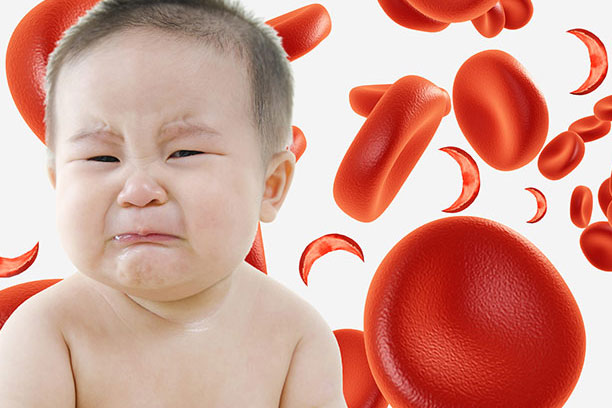Anemia is a common condition in children that can affect their overall health and well-being. Understanding the causes, symptoms, diagnosis, and treatment of anemia in kids is crucial for parents and caregivers to ensure proper care and management. In this comprehensive guide, we will delve into the various aspects of pediatric anemia to provide valuable insights and guidance.
What is Anemia?
Anemia refers to a condition characterized by a deficiency of red blood cells or hemoglobin in the blood, resulting in decreased oxygen-carrying capacity. In children, anemia can occur due to various factors, including nutritional deficiencies, genetic disorders, chronic diseases, or other underlying health issues.

Causes of Anemia in Kids
Anemia in children can stem from various factors, including nutritional deficiencies, chronic diseases, genetic disorders, and environmental influences. The primary causes of anemia in kids include:
Iron Deficiency
Iron deficiency anemia is the most common type of anemia in children. Insufficient intake of dietary iron or poor absorption of iron in the body can lead to this condition. Children with rapid growth during infancy and adolescence are particularly susceptible to iron deficiency anemia.
Vitamin Deficiencies
Apart from iron, deficiencies in other essential vitamins such as vitamin B12 and folate can also contribute to anemia in children. These vitamins play a crucial role in red blood cell production, and their inadequate intake can lead to various types of anemia.
Chronic Diseases
Certain chronic conditions, including inflammatory bowel disease, kidney disease, and cancer, can interfere with the body's ability to produce an adequate number of red blood cells, leading to anemia.
Genetic Factors
Inherited disorders such as sickle cell anemia and thalassemia can cause chronic anemia in children. These conditions affect the structure or production of hemoglobin, resulting in abnormal red blood cells.
Lead Exposure
Exposure to lead, often through contaminated water or paint, can impair red blood cell production and lead to anemia in children.
Symptoms of Anemia in Kids
Recognizing the signs and symptoms of anemia in children is crucial for early detection and intervention. Common symptoms of anemia in kids may include
Fatigue and Weakness
Children with anemia often experience persistent fatigue and weakness, which may impact their ability to engage in physical activities or concentrate in school.
Pale Skin
Anemia can cause paleness of the skin, particularly noticeable in the face, lips, and nail beds.
Irritability
Anemic children may exhibit irritability, fussiness, or mood swings, which can be attributed to decreased oxygen supply to the brain.
Poor Appetite
A decreased appetite or difficulty in feeding is a common symptom of anemia in infants and young children.
Shortness of Breath
In severe cases of anemia, children may experience shortness of breath, especially during physical exertion or exercise.
Diagnosis of Anemia in Kids
When suspecting anemia in a child, healthcare providers typically conduct a thorough evaluation, which may include
- Medical History: Gathering information about the child's symptoms, dietary habits, and family history of anemia or related conditions.
- Physical Examination: A physical examination to assess for signs such as pallor, rapid heart rate, and enlarged spleen or liver.
- Blood Tests: Blood tests, including a complete blood count (CBC) and iron studies, to measure hemoglobin levels, red blood cell count, and iron status.
- Additional Testing: Depending on the suspected cause of anemia, additional tests such as vitamin B12 levels, folate levels, or genetic testing may be performed.
Treatment of Anemia in Kids
The treatment approach for anemia in children varies based on the underlying cause and severity of the condition. Common treatment strategies include:
Dietary Modifications
For children with iron deficiency anemia, increasing dietary intake of iron-rich foods such as lean meats, leafy green vegetables, beans, and fortified cereals can help replenish iron stores.
Supplementation
In cases of severe iron deficiency or vitamin deficiencies, healthcare providers may prescribe oral supplements to restore nutrient levels. It's essential to follow dosage recommendations carefully to avoid toxicity.
Management of Underlying Conditions
Children with chronic diseases contributing to anemia require comprehensive management of their underlying condition, which may include medication, lifestyle modifications, or specialized treatments.
Blood Transfusions
In severe cases of anemia, particularly in children with inherited disorders or acute blood loss, a blood transfusion may be necessary to rapidly replenish red blood cell levels.
Environmental Interventions
Addressing environmental factors such as lead exposure through home inspections and remediation efforts can prevent further complications of anemia.
Anemia in kids is a prevalent yet manageable health condition that requires prompt recognition and appropriate intervention. By understanding the causes, symptoms, diagnosis, and treatment of anemia in children, parents and caregivers can play a proactive role in safeguarding their child's health and well-being. Regular pediatric check-ups, a balanced diet, and open communication with healthcare providers are essential components of promoting optimal health and preventing anemia-related complications in children.
